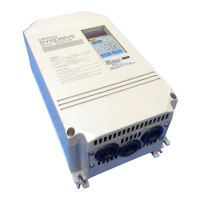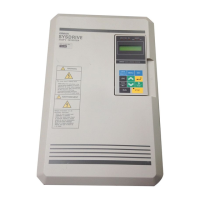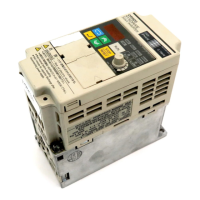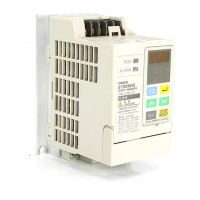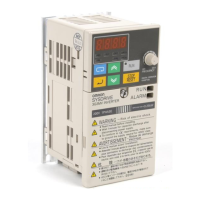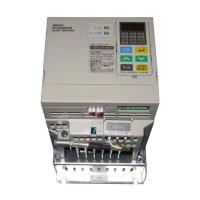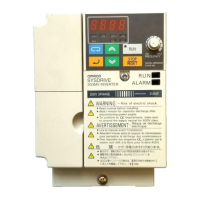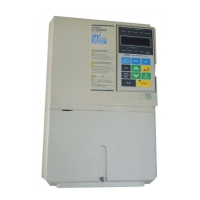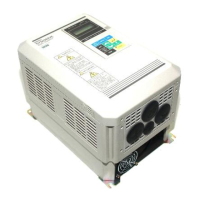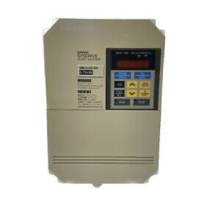How to troubleshoot EF3 (External Fault) on Omron Inverter?
- DDawn WagnerSep 8, 2025
If your Omron Inverter displays the error code EF3 (External Fault), check the external circuitry (sequence).

How to troubleshoot EF3 (External Fault) on Omron Inverter?
If your Omron Inverter displays the error code EF3 (External Fault), check the external circuitry (sequence).
What to do if Omron Inverter has no display (Fuse Blown)?
If your Omron Inverter shows no display and the fuse is blown, the suggested solution is to replace the inverter.
How to resolve BB (External Baseblock) error on Omron SYSDRIVE 3G3SV-B2002-E?
If your Omron Inverter displays the error code BB (External Baseblock), check the sequence circuit.
What to do if Omron SYSDRIVE 3G3SV-B2002-E displays CPF-07 (Thermistor fault)?
If your Omron Inverter displays the error code CPF-07 (Thermistor fault), the suggested solution is to replace the inverter.
What causes UV (Main Circuit Under-voltage) on Omron SYSDRIVE 3G3SV-B2002-E?
If your Omron Inverter displays an UV (Main Circuit Under-voltage) error, check the power supply voltage and ensure that the power supply terminal screws are tightened well.
How to resolve OL3 (Overtorque Detection) error on Omron Inverter?
If your Omron Inverter displays an OL3 (Overtorque Detection) error, check the machine using its status and remove the cause. Alternatively, increase the set value.
| Type | Inverter |
|---|---|
| Model | 3G3SV-B2002-E |
| Series | SYSDRIVE 3G3SV |
| Input Frequency | 50/60 Hz |
| Motor Capacity | 0.4 kW |
| Input Voltage | 200-240V AC |
| Output Voltage | 200-240 VAC |
| Output Frequency | 400 Hz |
| Cooling Method | Fan Cooled |
| Protection Features | Overcurrent, Overvoltage, Undervoltage, Overheat, Short Circuit |
| Ambient Temperature | -10°C to +50°C |
| Altitude | 1000 m |
| Vibration | 5.9 m/s2 |
| Storage Temperature | -20 to +60 °C (-4 to 140 °F) |
| Humidity | 5-95% (non-condensing) |
Identifies and illustrates the main components of the SYSDRIVE 3G3SV inverter.
Instructions for checking the inverter unit after unpacking and verifying part numbers.
Guidelines for proper installation location and environmental conditions for the inverter.
Detailed instructions for connecting the main circuit and control circuit wiring.
Procedures for checking the inverter before operation and methods for operating it.
Periodic inspection guidelines and corrective actions for maintaining the inverter unit.
Information on fault displays, their causes, and corrective actions for troubleshooting.
Technical specifications, including model numbers, electrical characteristics, and dimensions.
Describes two installation methods for the digital operator: hand operation and panel mounting.
Details the layout and functions of the digital operator's display and buttons.
Provides an overview of the main functions of the digital operator and the inverter.
Explains how to navigate and set functions and constants using the DRIVE and PRGM modes.
Illustrates a typical operation sequence using the digital operator.
Covers procedures for resetting constants to factory settings and restricting write-in access.
Details adjustments for frequency setting value, output frequency bias, and gain.
Explains how to monitor frequency reference, output frequency, current, and fault contents.
A comprehensive list of functions and constants with their initial settings and page references.
Detailed explanations of various functions and constants, including password and mode settings.
Outlines the inverter's protection functions, their explanations, and fault outputs.
Describes warning indicators and self-diagnosis features for inverter status.

